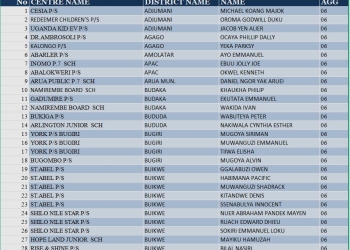South Africa’s retail sector is entering a pivotal phase. After several quarters of mixed signals — sluggish growth, cost pressures, and store closures — the latest developments point to a market regaining its stride. But this is not a simple rebound story. Beneath the topline growth, we see deep structural shifts reshaping how retailers operate, how consumers engage, and where investors place their bets.
Consumer Confidence Returns — But with Clear Preferences
The 7% year-on-year growth in retail sales this January is more than a bounce — it’s a shift in spending psychology. South African consumers, despite inflationary headwinds, are demonstrating a willingness to spend again. But it’s not across the board. The winners are the brands that combine value, consistency, and experience.
Grocery leaders like Shoprite and SPAR continue to dominate, not merely by offering low prices, but through operational resilience, supply chain sophistication, and nationwide accessibility. Shoprite’s ability to grow while others downsize reveals an increasingly Darwinian retail environment: those with scale, logistics muscle and brand trust are not just surviving, but expanding.
Discretionary retail is also showing signs of life, but with nuance. We’re seeing early indicators of a ‘two-speed consumer economy’ — one driven by cost-conscious households, the other by aspirational spenders seeking curated, high-value experiences. Both segments demand different approaches — and retailers who try to straddle both without clear differentiation risk losing both.
Strategic Clarity Over Scale: The End of the “Everything Store”
The Retailability group’s decision to divest sub-brands such as Legit, Swagga, Style, and Boardmans is emblematic of a broader recalibration taking place. In an oversaturated market, retailers are shedding legacy baggage, narrowing their focus, and placing strategic clarity over unchecked expansion.
Similarly, Pick n Pay, long seen as a struggling legacy player, is attempting a comeback with a dual-track approach: strategic store closures on one side, and new store launches on the other. This is less about real estate and more about format strategy — pivoting toward leaner, more agile stores with tighter cost structures and stronger regional relevance.
Meanwhile, the entry of Nafcoc as a potential shareholder in Pick n Pay marks a significant shift in investor sentiment. There’s renewed confidence among local institutional actors that South African retail still holds considerable untapped value — provided leadership teams can deliver turnaround plans with discipline and speed.
Omnichannel Moves from Buzzword to Battleground
If 2024 was the year omnichannel became a boardroom priority, 2025 is the year it becomes a competitive imperative. The Absa report citing a 51% surge in online shopping underlines how deeply South African consumers are embracing digital-first retail. But this is not simply a migration to e-commerce. The more sophisticated consumer journey now includes in-store browsing, online price comparisons, click-and-collect, and increasingly, integrated loyalty experiences.
Retailers like Takealot, through their partnership with creative agency Joe Public, are doubling down on brand relevance and experience — using creativity not just for advertising, but to shape UX, content commerce, and product discovery.
New entrants such as African Pro and BoxCommerce are helping to democratise e-commerce for SMEs, which could drive further fragmentation in the marketplace — but also wider consumer choice.
Ultimately, omnichannel is not a technology race — it’s a logistics, data, and fulfilment race. The edge will go to those who can deliver end-to-end convenience across digital and physical touchpoints while keeping operating costs under control.
Premium Retail Makes a Statement
While much of the focus remains on mass-market retail, it would be a mistake to overlook the premium surge. The upcoming arrival of Dolce & Gabbana, Louis Vuitton, and Gucci at Cape Town’s V&A Waterfront signals international confidence in South Africa’s luxury sector.
This trend aligns with a rise in local high-net-worth individuals and a growing segment of affluent, urban consumers willing to invest in experiential retail. Retail locations like the V&A Waterfront are no longer just shopping centres — they’re becoming lifestyle precincts that blend hospitality, culture, and high-end commerce.
Elsewhere, niche luxury is also gaining traction. The Scoin Shop’s flagship store opening in Pretoria exemplifies a play for focused, high-margin retail models built on heritage, collectibility, and status.
Behind the Scenes: Infrastructure Innovation Accelerates
The consumer-facing side of retail often gets the spotlight, but it’s the infrastructure layer that will define long-term success. Payments, fulfilment, and back-end data systems are all undergoing quiet but critical reinvention.
TANGO’s innovation in payment experiences is part of a broader ecosystem shift — where seamless, secure, and omnichannel-ready payment solutions are no longer optional. These tools are enabling smaller retailers to play on a more level field, while allowing larger ones to deliver faster, more personalised checkout and loyalty experiences.
This shift from product-centric to platform-enabled retail is subtle but profound. We expect a growing number of South African retailers to invest in API-based architectures, inventory visibility systems, and customer data platforms that allow for adaptive, intelligent retail operations.
Calleo’s Outlook: From Expansion to Precision
At Calleo, we believe the South African retail sector is entering a new era — one defined not by pure scale or market share, but by strategic precision, operational discipline, and tech-enabled agility.
The winners in this next chapter will be those who:
- Invest in robust omnichannel ecosystems, not just front-end digital.
- Prioritise customer data and behavioural insights over legacy segmentation models.
- Know when to consolidate, when to divest, and when to double down.
- Understand that innovation is as much about logistics and payments as it is about flashy digital stores.
This is no longer a market for generalists. South African retail is becoming a game for the focused, the fast, and the flexible.

















